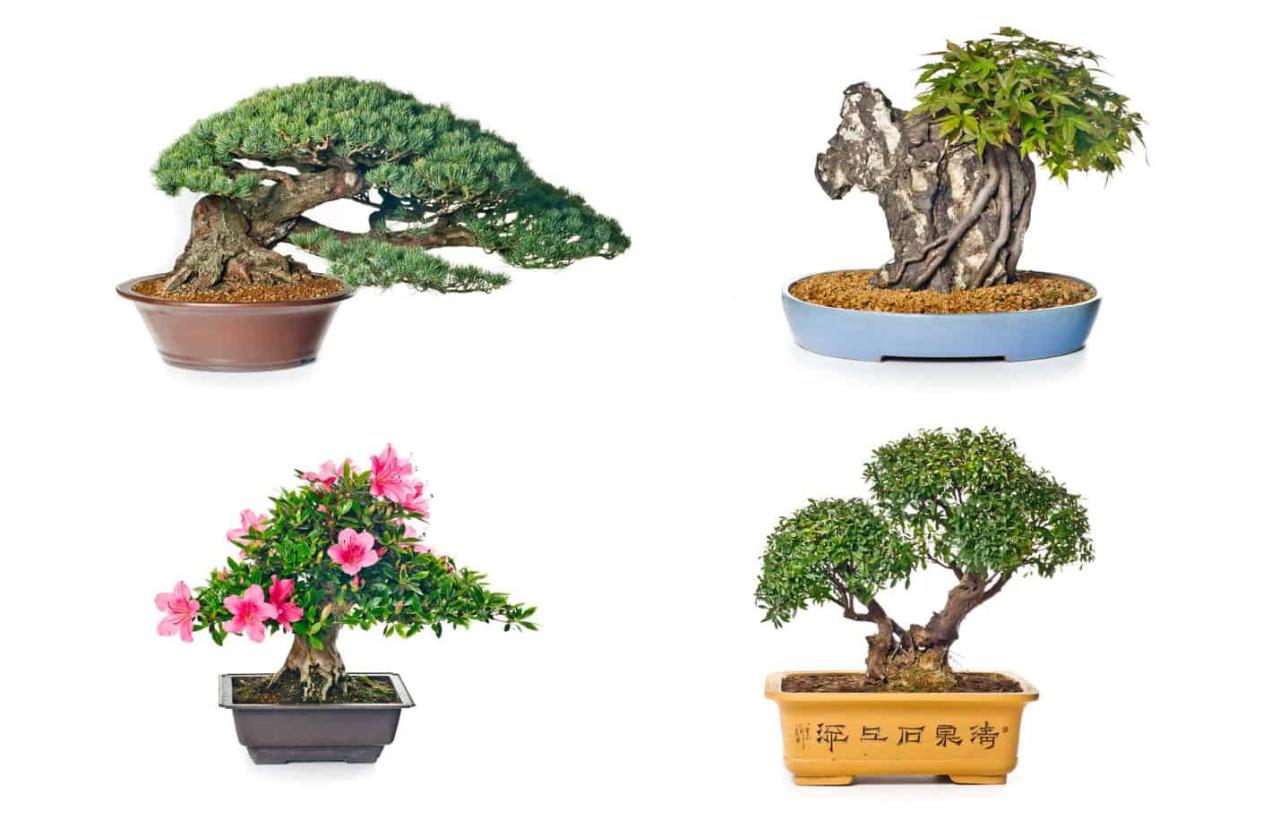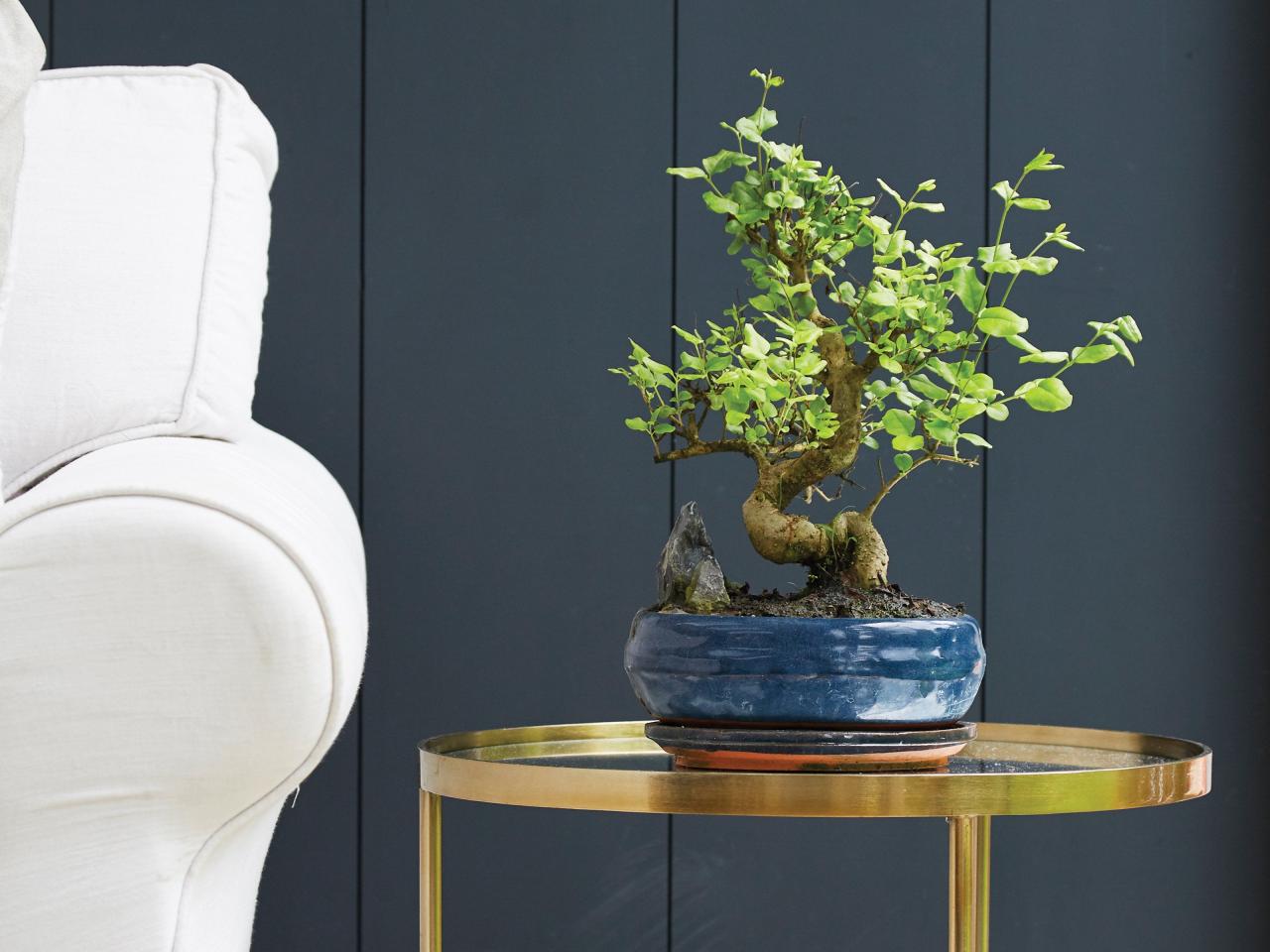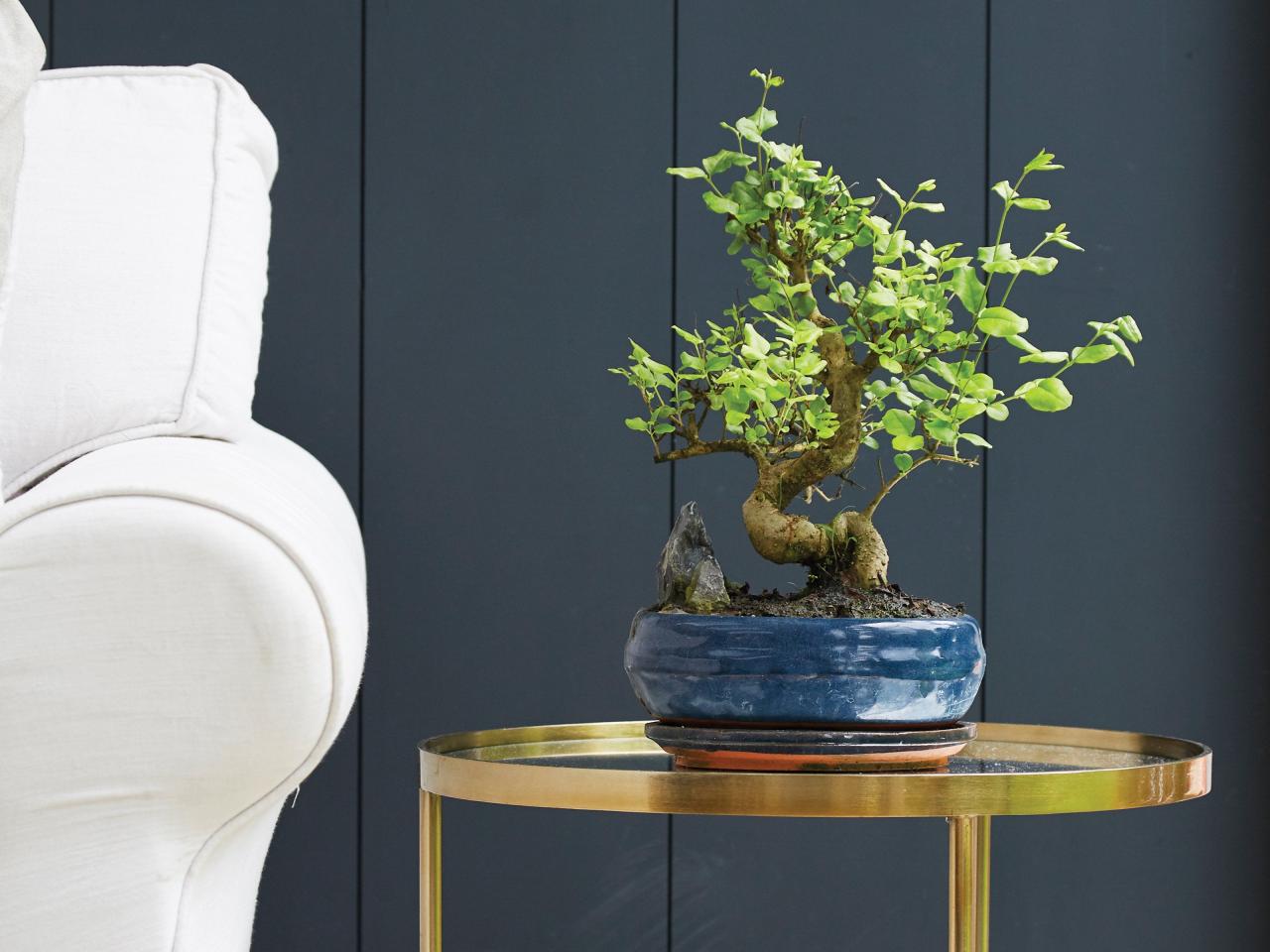Bonsai Pots: How to Choose the Right One for Each Tree – the right pot can transform a bonsai from a simple plant into a miniature masterpiece. The pot is not merely a container, but a crucial element in the bonsai’s overall health and aesthetic appeal.
It’s a harmonious partnership that reflects the art of bonsai, where every detail matters.
Beyond the visual impact, the choice of pot significantly affects the bonsai’s root system, drainage, and even its growth. Choosing the right pot requires careful consideration of the tree’s species, size, and style, and an understanding of the various materials, shapes, and aesthetics available.
Matching Pots to Trees

Choosing the right bonsai pot is crucial for the overall aesthetic and health of your tree. It’s not just about finding a pot that looks good; it’s about selecting a container that complements the tree’s size, style, and species. This ensures proper drainage, provides adequate root space, and enhances the tree’s visual appeal.
Choosing the right bonsai pot can elevate your tree’s beauty and enhance its overall health. When selecting a pot, consider the tree’s style, size, and even its root system. For a comprehensive guide on selecting the perfect bonsai pot, check out Choosing a Bonsai Pot: A Practical Guide for Beginners.
This resource provides valuable insights on factors like glaze, material, and shape, helping you make informed decisions that enhance your bonsai’s aesthetic appeal and promote its well-being.
Factors to Consider When Choosing a Bonsai Pot
When choosing a bonsai pot, there are several key factors to consider:
- Tree Size:The pot should be proportional to the size of the tree. A large tree will need a larger pot to accommodate its root system, while a small tree will look best in a smaller pot.
- Tree Style:Different bonsai styles call for different pot shapes. For example, a cascading style tree looks best in a shallow, wide pot, while an upright style tree can be displayed in a taller, narrower pot.
- Tree Species:Some tree species have specific requirements when it comes to pot size and material. For example, deciduous trees often thrive in unglazed pots that allow for better aeration, while coniferous trees may prefer glazed pots to retain moisture.
- Pot Material:Bonsai pots are typically made from materials like ceramic, clay, or stone. Each material has its own characteristics in terms of drainage, water retention, and aesthetic appeal.
- Glaze:The glaze on a bonsai pot can affect its water retention and visual appeal. Unglazed pots allow for better aeration, while glazed pots can help to retain moisture.
- Color:The color of the pot should complement the tree’s foliage and bark. A contrasting color can make the tree stand out, while a similar color can create a more harmonious effect.
Pot Shapes and Their Suitability for Bonsai Styles
Bonsai pots come in a wide variety of shapes, each designed to complement different bonsai styles. Here are some common pot shapes and their suitability for various bonsai styles:
- Round Pots:These are the most common type of bonsai pot and are suitable for a wide range of styles, including upright, slanting, and informal upright styles.
- Oval Pots:Oval pots are similar to round pots but are slightly elongated, making them ideal for cascading styles and trees with a sweeping branch structure.
- Rectangular Pots:Rectangular pots are often used for formal upright styles, as their straight lines complement the tree’s symmetry.
- Square Pots:Square pots are less common but can be used for a variety of styles, including informal upright and semi-cascading styles.
- Shallow Pots:Shallow pots are ideal for cascading styles, as they provide ample space for the branches to cascade downwards.
- Deep Pots:Deep pots are typically used for upright styles, as they provide adequate root space for the tree to grow.
Ideal Pot Size and Shape for Common Bonsai Tree Species
The following table Artikels the ideal pot size and shape for common bonsai tree species:
Tree Species |
Ideal Pot Size |
Ideal Pot Shape |
|---|---|---|
Japanese Black Pine (Pinus thunbergii) |
Small to medium |
Round, oval, or rectangular |
Japanese Red Pine (Pinus densiflora) |
Small to medium |
Round, oval, or rectangular |
Juniper (Juniperus spp.) |
Small to medium |
Round, oval, or rectangular |
Chinese Elm (Ulmus parvifolia) |
Medium to large |
Round, oval, or rectangular |
Ficus (Ficus spp.) |
Medium to large |
Round, oval, or rectangular |
Maple (Acer spp.) |
Small to medium |
Round, oval, or rectangular |
Pot Styles and Aesthetics: Bonsai Pots: How To Choose The Right One For Each Tree
The pot is more than just a container for a bonsai tree; it’s an integral part of the overall aesthetic. The right pot can accentuate the tree’s beauty, enhance its shape, and create a harmonious balance. The style and color of the pot play a crucial role in achieving this aesthetic harmony.
Pot Shapes and Their Applications
The shape of a bonsai pot is a fundamental aspect of its design. Different shapes have varying effects on the overall composition and create unique visual dynamics.
- Rectangular Pots:These pots provide a sense of stability and formality. They are often used for trees with upright or cascading styles, as the rectangular shape complements the tree’s vertical lines.
- Oval Pots:Oval pots offer a more graceful and flowing aesthetic. They are well-suited for trees with informal or semi-cascade styles, as the rounded shape complements the tree’s natural curves.
- Round Pots:Round pots are versatile and can be used for a wide range of bonsai styles. They provide a sense of balance and harmony, making them suitable for both formal and informal trees.
The Role of Color and Glaze
The color and glaze of a bonsai pot can significantly impact the overall visual impact of the arrangement.
- Dark Colors:Dark-colored pots, such as black or brown, create a sense of depth and sophistication. They are often used for trees with a strong presence, such as pines or junipers.
- Light Colors:Light-colored pots, such as white or cream, provide a sense of lightness and airiness. They are well-suited for delicate trees with a delicate foliage, such as maples or azaleas.
- Glazes:Glazes can add texture and visual interest to a bonsai pot. Some popular glazes include matte, glossy, and crackled finishes.
Potting and Care
The final step in creating a bonsai masterpiece is potting the tree in its chosen pot. This process is crucial for the bonsai’s health and development. The right soil, drainage, and secure placement within the pot are essential for the tree’s well-being.
Choosing the right bonsai pot is crucial for the health and aesthetics of your tree. The pot should complement the tree’s size and style, while also providing adequate drainage and root space. Understanding how to choose a pot that promotes healthy growth is essential, and you can find a comprehensive guide on How to Choose a Bonsai Pot That Promotes Healthy Growth.
With the right pot, you can create a harmonious balance between the tree and its container, enhancing its beauty and longevity.
Potting Process, Bonsai Pots: How to Choose the Right One for Each Tree
Once you have chosen the appropriate pot, it’s time to carefully pot your bonsai. The process involves selecting the right soil, ensuring proper drainage, and securing the tree within the pot.
- Soil Selection:Bonsai soil is a specialized mix that provides excellent drainage and aeration while retaining enough moisture. A typical bonsai soil mix consists of:
- Akadama:A volcanic clay that provides good drainage and aeration.
- Kanuma:A reddish-brown clay that is slightly acidic and retains moisture better than akadama.
- Pumice:A lightweight, porous material that improves drainage and aeration.
- Organic matter:Such as compost or peat moss, which helps retain moisture and provides nutrients.
The exact ratio of these components will vary depending on the specific needs of the bonsai tree.
- Drainage:Adequate drainage is essential for preventing root rot and maintaining healthy soil conditions. The pot should have drainage holes at the bottom to allow excess water to escape. A layer of gravel or coarse sand at the bottom of the pot can further enhance drainage.
- Securing the Tree:The bonsai tree should be securely placed within the pot, ensuring that it is stable and has enough root space. This can be achieved by:
- Wire:A thin wire can be used to gently secure the tree’s roots to the pot’s edges.
It is important to use wire that is not too thick, as it can damage the roots.
- Rocks:Small rocks can be placed around the base of the tree to help secure it. The rocks should be placed carefully to avoid damaging the roots.
- Soil:The soil should be packed firmly around the roots to provide support. It is important to avoid over-packing the soil, as this can restrict root growth.
- Wire:A thin wire can be used to gently secure the tree’s roots to the pot’s edges.
Repotting
Repotting is an essential part of bonsai care, and it is usually done every 1-3 years, depending on the tree’s growth rate and the size of the pot. Repotting allows for:
- Root Pruning:Repotting provides an opportunity to prune the roots, which helps to control the tree’s growth and maintain its shape.
- Soil Refreshment:The old soil can become compacted and depleted of nutrients. Repotting allows you to replace the old soil with fresh, nutrient-rich soil.
- Pot Size Adjustment:As the bonsai grows, it may need to be repotted into a larger pot to provide more root space.
Repotting is a delicate process that requires care and attention to detail. It is essential to follow the proper techniques to avoid damaging the roots and ensuring the tree’s continued health.
Conclusive Thoughts

The art of bonsai is a journey of patience, precision, and a deep appreciation for nature. Selecting the perfect pot is a crucial step in this journey, one that elevates the bonsai from a mere plant to a captivating work of art.
With a keen eye for detail and a thoughtful approach, you can choose a pot that not only enhances the bonsai’s beauty but also contributes to its health and longevity, ensuring that this miniature world continues to thrive for generations to come.
Essential Questionnaire
What are the most common materials used for bonsai pots?
Bonsai pots are typically made from materials like ceramic, stoneware, porcelain, and even wood. Each material offers unique characteristics in terms of aesthetics, durability, and water retention.
How do I know if my bonsai needs repotting?
Signs that your bonsai needs repotting include roots circling the pot, stunted growth, and poor drainage. Repotting typically occurs every 2-3 years for young bonsai and less frequently for mature trees.
What are some tips for choosing a bonsai pot color?
Consider the color of your bonsai tree and the overall aesthetic you’re aiming for. Contrasting colors can create a striking visual impact, while complementary colors can offer a more subtle and harmonious look.
